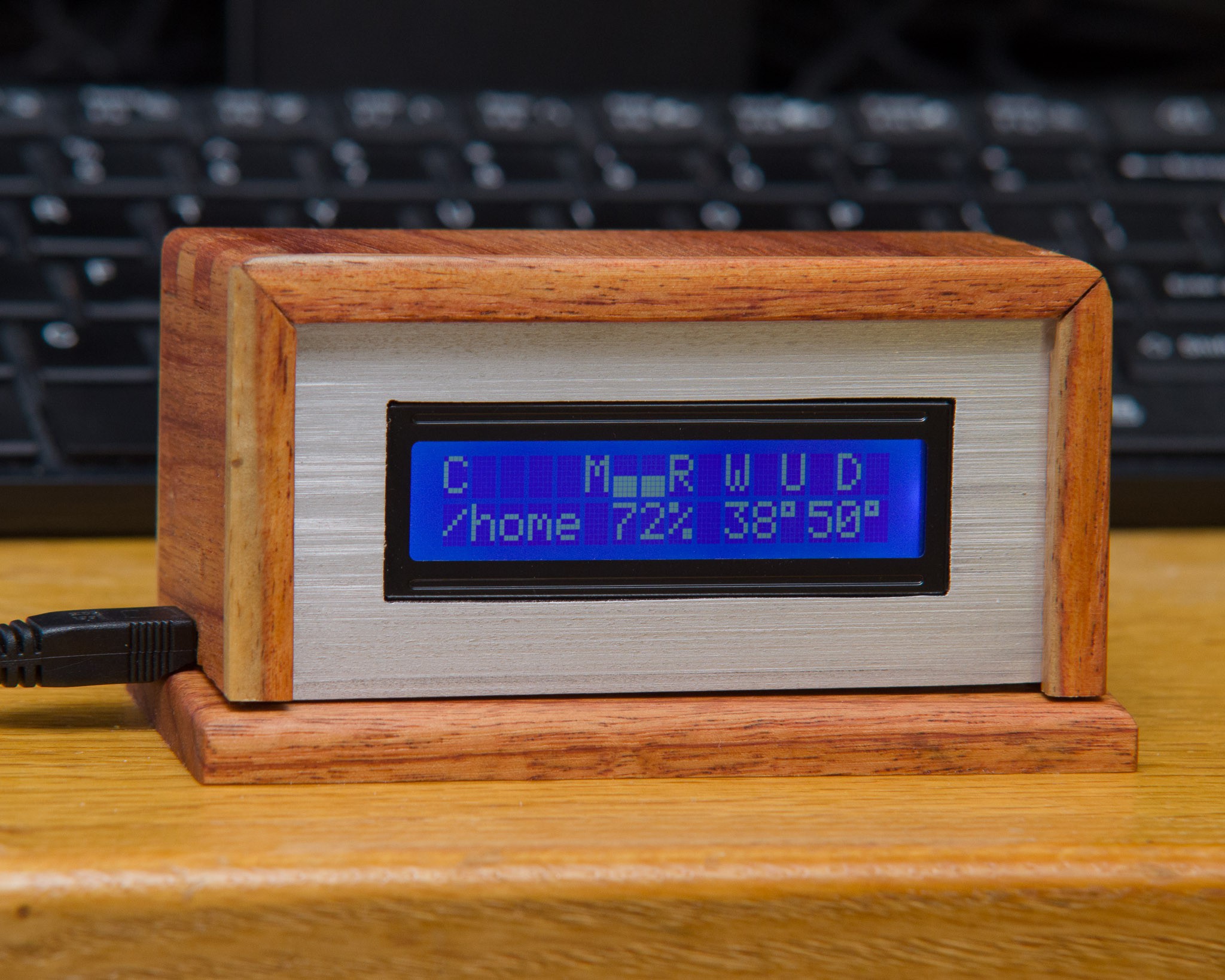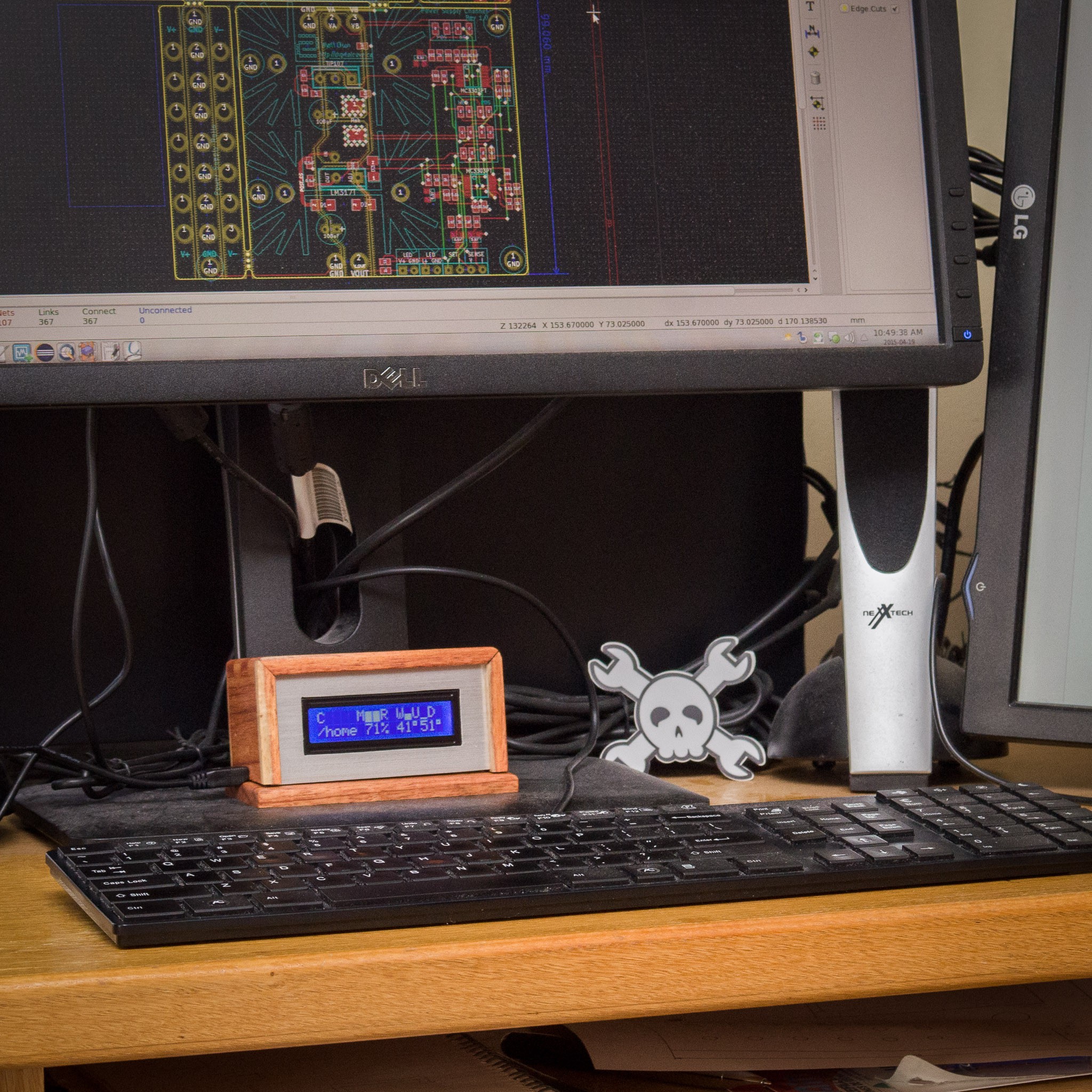The Python client program currently shows the following information:
First line:
- CPU % (Instant, 10 second average, 1 min average, 5 min average)
- Memory % (Instant, 10 second average)
- Disk Read (10 second average)
- Disk Write (10 second average)
- Network Upload (10 second average)
- Network Download (10 second average)
Second line:
- Mount point disk usage (rotates through all mount points every 5 seconds, showing percentage)
- CPU Temperature
- GPU Temperature
The AVR code shuts off the display after a period of inactivity (i.e. if the computer goes to sleep but the USB port is still active).
The enclosure was made on my scroll saw, using Arariba wood and a brushed aluminum faceplate. (Originally I had cut the enclosure out of MDF on my scroll saw using a generated design from http://boxmaker.rahulbotics.com/ , modified to provide windows for the LCD and a USB cable.) Unfortunately I do not have plans for the new box, as I somewhat designed it as I went (it was an exercise in determining the best procedure for wooden + aluminum enclosures, as I am planning on making my power supply enclosure in a similar manner).
 The Big One
The Big One The aluminum was some 1/8" extruded flat scrap that I had lying around. I cut out the hole for the display on my scroll saw (after trying a few other methods which did not work very well at all). I am not sure if using a scroll saw is the best for this, but it seemed to work as long as I kept the blade speed fast and the feed rate slow.
The aluminum was some 1/8" extruded flat scrap that I had lying around. I cut out the hole for the display on my scroll saw (after trying a few other methods which did not work very well at all). I am not sure if using a scroll saw is the best for this, but it seemed to work as long as I kept the blade speed fast and the feed rate slow.